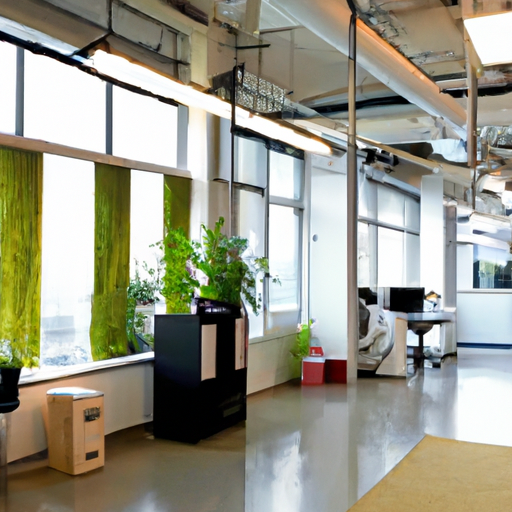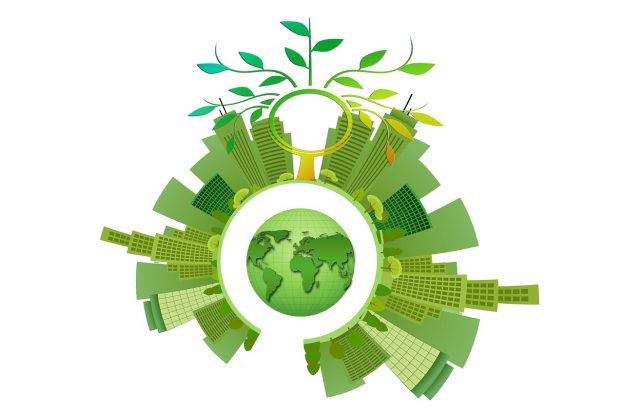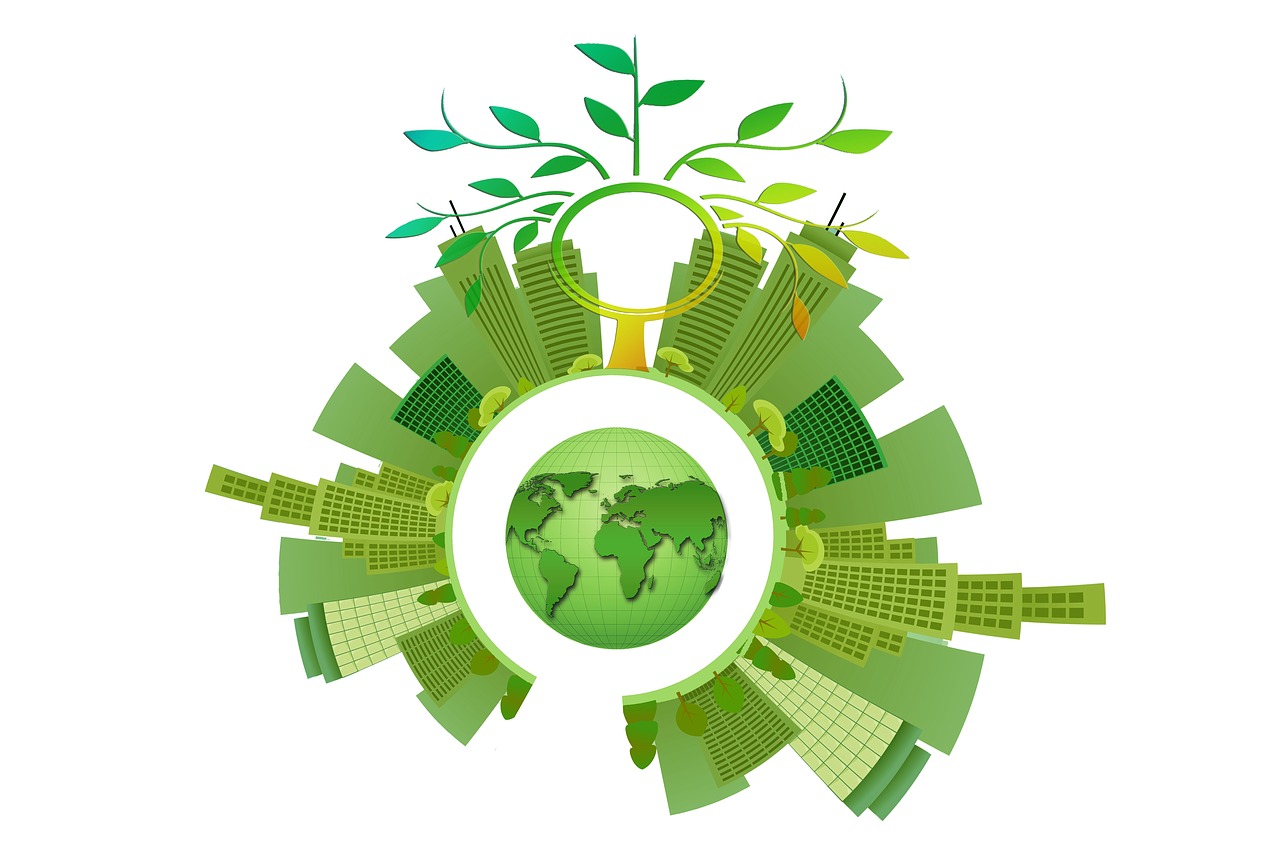In today’s rapidly changing world, businesses are not just concerned with profitability, but also with making a positive impact on society and the environment. This shift in mindset has given rise to the concept of socially responsible investing. By aligning their investments with their values, companies can not only contribute to the greater good but also attract socially conscious investors. This article explores the principles of socially responsible investing, its benefits for businesses and investors alike, and provides guidance on how to incorporate this approach into investment strategies.

What is Socially Responsible Investing?
Definition and Explanation
Socially responsible investing (SRI), also known as sustainable investing or ethical investing, is an investment strategy that takes into account both financial returns and the impact on society and the environment. It involves investing in companies that align with your personal values and have a positive impact on the world.
The concept of socially responsible investing revolves around the idea that the decisions made by corporations can have far-reaching consequences. By investing in companies that prioritize social, environmental, and governance (ESG) factors, individuals and businesses can contribute to a more sustainable and equitable future.
Criteria for Socially Responsible Investing
To determine whether a company is socially responsible, various criteria are considered. These criteria typically include environmental considerations, social considerations, and governance considerations. Investors assess factors such as a company’s environmental impact, labor practices, community engagement, diversity and inclusion policies, and ethical business practices.
By evaluating a company’s performance in these areas, investors can make informed decisions about where to allocate their capital. This allows them to support companies that align with their values and avoid those that do not meet their social and ethical standards.
Advantages of Socially Responsible Investing
Positive Impact on Society
One of the most significant advantages of socially responsible investing is its potential to generate positive social and environmental change. By investing in companies that prioritize sustainable practices, human rights, and community development, individuals and businesses can contribute to the betterment of society.
Socially responsible investing enables investors to support businesses that are making a difference in areas such as renewable energy, healthcare, education, and poverty alleviation. Through their investments, individuals and businesses can become agents of change, promoting a more sustainable and equitable society.
Potential Financial Returns
Contrary to popular belief, socially responsible investing can provide competitive financial returns. Studies have shown that companies with strong ESG performance often outperform their peers in the long term. By considering non-financial factors when making investment decisions, investors can potentially identify companies that are well-positioned for future growth and profitability.
Moreover, socially responsible investing can mitigate certain risks. By investing in companies that prioritize environmental sustainability and adhere to ethical business practices, investors can reduce their exposure to potential legal and reputational risks. This can lead to greater stability and resilience in the investment portfolio.
Enhanced Corporate Reputation
Investing in companies that prioritize social responsibility can also enhance the reputation of investors and businesses. By aligning their investments with their values, individuals and businesses can demonstrate their commitment to sustainable and ethical practices, which can resonate with customers, employees, and other stakeholders.
When companies are known for their responsible and sustainable practices, they are more likely to attract loyal customers and high-quality talent. Additionally, a strong commitment to social responsibility can help businesses differentiate themselves in their respective industries, leading to a competitive advantage.
Disadvantages of Socially Responsible Investing
Limited Investment Options
One of the primary challenges of socially responsible investing is the relatively limited number of investment options compared to traditional investing. Since socially responsible investing requires careful evaluation of a company’s ESG performance, investors may find it challenging to identify suitable investment opportunities that align with their values.
However, the availability of socially responsible investment options has been increasing in recent years as more companies recognize the importance of sustainability and ethical practices. Investors now have a growing range of funds and portfolios that focus on ESG criteria, enabling them to diversify their investment while staying true to their values.
Possibility of Lower Returns
Although socially responsible investing can generate competitive financial returns, there is a possibility of lower returns compared to traditional investing in certain cases. This is primarily due to the exclusion of companies or industries that may have higher profitability but do not meet the desired social or ethical standards.
However, it is important to note that the performance of socially responsible investments can vary depending on individual investment choices and market conditions. With careful research and analysis, investors can identify socially responsible investment opportunities that offer potential for both financial returns and positive impact.
Subjectivity and Lack of Standardization
Another challenge of socially responsible investing is the subjectivity and lack of standardization in evaluating companies’ ESG performance. There is currently no universally accepted framework or set of criteria for determining a company’s social and environmental responsibility.
As a result, investors may face difficulties in comparing and assessing companies based on their ESG performance. This lack of standardization can make it challenging to identify the most suitable investment opportunities and increases the importance of conducting thorough research and due diligence.
Factors to Consider in Socially Responsible Investing
Environmental Considerations
Environmental considerations are a crucial factor in socially responsible investing. Investors assess a company’s impact on the environment, such as its carbon footprint, waste management practices, and conservation efforts. Companies that prioritize sustainability, renewable energy, and resource efficiency are often favored by socially responsible investors.
Social Considerations
Social considerations focus on a company’s impact on society, employees, and communities. Investors evaluate factors such as labor practices, human rights, diversity and inclusion policies, and community engagement. Companies that demonstrate fair treatment of employees, support social justice initiatives, and actively contribute to the communities they operate in are often preferred by socially responsible investors.
Governance Considerations
Governance considerations address a company’s ethical business practices, transparency, and accountability. Investors assess factors such as a company’s executive compensation structure, board diversity, shareholder rights, and adherence to ethical standards. Companies that prioritize strong corporate governance and demonstrate ethical behavior are frequently sought after by socially responsible investors.
Different Approaches to Socially Responsible Investing
Exclusionary Screening
Exclusionary screening involves excluding companies or industries that do not align with an investor’s values or ethical standards. This approach involves avoiding investments in industries such as tobacco, weapons, or fossil fuels. By excluding these companies, investors can create an investment portfolio that reflects their values and is free from investments they deem socially or ethically unacceptable.
Inclusionary Screening
Inclusionary screening, also known as positive screening or best-in-class approach, focuses on actively selecting companies that promote sustainable practices and meet specific ESG criteria. Instead of excluding certain industries, this approach identifies companies with exceptional environmental and social performance.
By investing in companies that prioritize ESG factors, investors can support businesses that are leading in sustainable practices and contribute to positive change in their respective industries.
Thematic Investing
Thematic investing involves targeting specific social or environmental themes or causes. Investors allocate their capital to companies that are actively engaged in addressing these themes, such as renewable energy, clean technology, or healthcare innovation.
By focusing on specific themes, investors can contribute to the development of solutions to pressing social and environmental challenges while potentially benefiting from the growth and innovation in these sectors.
Impact Investing
Impact investing goes beyond maximizing financial returns and aims to generate measurable positive social or environmental impact. This approach involves investing in companies or projects that have explicit social or environmental objectives.
Impact investors actively seek out opportunities that align with their desired impact areas, such as affordable housing, clean water, or education access. Through impact investing, investors can align their financial goals with their desire to make a difference in the world.
Trends and Growth in Socially Responsible Investing
Increasing Demand and Awareness
In recent years, there has been a significant increase in demand and awareness for socially responsible investing. Investors are increasingly recognizing the importance of considering non-financial factors when making investment decisions. This growing demand has led to the development of new investment vehicles and strategies that cater to socially responsible investors.
As more individuals and businesses prioritize sustainability and ethical practices, socially responsible investing is expected to continue its growth trajectory. This presents an opportunity for businesses to align their values with those of socially responsible investors to attract capital and enhance their reputation.
Emerging Technologies and Innovations
The rise of emerging technologies and innovations has also contributed to the growth of socially responsible investing. Technology has enabled the collection and analysis of vast amounts of data, allowing investors to better evaluate companies’ ESG performance.
Artificial intelligence, machine learning, and big data analytics have made it possible for investors to assess companies’ sustainability practices, identify risks, and predict potential financial returns. These technological advancements have provided investors with more in-depth insights into companies’ social and environmental impact, further driving the growth of socially responsible investing.

Legal and Regulatory Considerations for Socially Responsible Investing
SEC Regulations
Socially responsible investing falls under the purview of the U.S. Securities and Exchange Commission (SEC). While the SEC does not specifically regulate the practice of socially responsible investing, it requires investment advisors to disclose material information that could affect an investor’s decision-making process.
Investment advisors must provide clear and accurate information about the investment strategy, including any socially responsible investment approaches used. Compliance with SEC regulations ensures transparency and helps investors make informed decisions about their investments.
Fiduciary Duties
For professionals providing investment advice, such as financial advisors or wealth managers, fiduciary duties come into play when practicing socially responsible investing. Fiduciaries have a legal obligation to act in the best interests of their clients, including considering their clients’ social and ethical preferences.
Financial professionals must fulfill their duties with care, prudence, and diligence when advising clients on socially responsible investing options. This ensures that clients’ values are respected while their financial goals are pursued.
Disclosure Requirements
In addition to SEC regulations, companies that engage in socially responsible investing may also have to comply with specific disclosure requirements. When promoting their social and environmental practices to investors, businesses must ensure they provide accurate and complete information.
Failure to disclose relevant information or making false or misleading statements can lead to legal and reputational risks. Adhering to disclosure requirements helps maintain transparency and fosters trust between companies and socially responsible investors.
Challenges and Criticisms of Socially Responsible Investing
Greenwashing
One of the main challenges and criticisms of socially responsible investing is the risk of greenwashing. Greenwashing refers to the practice of misleadingly presenting a company’s environmental or social practices as more sustainable or ethical than they actually are.
To address this challenge, investors need to conduct thorough research and due diligence to ensure companies’ claims align with their actual practices. Engaging with independent third-party rating agencies and using standardized ESG frameworks can help mitigate the risk of greenwashing.
Lack of Consensus on Definitions
Another challenge in socially responsible investing is the lack of consensus on the definitions and standards used to evaluate companies’ social and environmental performance. Different rating agencies and frameworks may have varying criteria and methodologies, making it challenging for investors to compare and assess companies consistently.
However, efforts are being made to address this challenge. Organizations such as the Global Reporting Initiative (GRI) and the Sustainability Accounting Standards Board (SASB) are working to establish more standardized reporting frameworks, promoting transparency and comparability in ESG reporting.
Potential for Divestment Backlash
Investors who divest from companies or industries that do not align with their values may face potential backlash. Divestment, while seen as a powerful tool for expressing dissatisfaction or driving change, can have unintended consequences.
Divestment may result in a loss of influence for socially responsible investors, as they no longer have a stake in the companies they seek to change. Engaging with companies through active ownership and proxy voting can be an alternative approach to driving meaningful change while still maintaining a financial stake.
Steps to Get Started with Socially Responsible Investing
Define Your Values and Objectives
Before engaging in socially responsible investing, it is essential to define your values and objectives. Determine the causes, themes, or values that matter most to you and align with your personal or business values. This will guide your investment decisions and help you identify companies that reflect your desired impact.
Research and Evaluate Investment Options
Thoroughly research and evaluate the available socially responsible investment options. Consider factors such as financial performance, ESG criteria, and the overall fit with your values and objectives. Look for transparency and clear reporting on companies’ ESG practices to ensure alignment.
Engaging with a financial advisor who specializes in socially responsible investing can also provide valuable insights and guidance during the research and evaluation process.
Consult with a Financial Advisor
Consulting with a financial advisor who specializes in socially responsible investing can provide additional guidance and expertise. A qualified advisor can help you navigate the complexities of socially responsible investing, understand the potential risks and rewards, and create a customized investment strategy that aligns with your values and objectives.
FAQs
Can socially responsible investing be profitable?
Yes, socially responsible investing can be profitable. Studies have shown that companies with strong ESG performance often outperform their peers in the long term. By considering non-financial factors when making investment decisions, investors can potentially identify companies that are well-positioned for future growth and profitability.
What are the risks of socially responsible investing?
The risks of socially responsible investing include limited investment options, the possibility of lower financial returns compared to traditional investing in some cases, and the subjectivity and lack of standardization in evaluating companies’ ESG performance. However, with careful research, due diligence, and guidance from a financial advisor, these risks can be managed.
How do I determine if a company is socially responsible?
Determining whether a company is socially responsible involves evaluating its environmental, social, and governance practices. Consider factors such as the company’s environmental impact, labor practices, community engagement, diversity and inclusion policies, and commitment to ethical business practices. Use standardized frameworks, independent rating agencies, and transparent ESG reporting to gather information about a company’s social responsibility practices.
Are there any tax benefits for socially responsible investing?
While there are no specific tax benefits solely for socially responsible investing, some investments such as green bonds or renewable energy investments may qualify for tax incentives or credits. Consult with a tax professional to understand the potential tax benefits associated with specific socially responsible investments.
Can I incorporate social and environmental values into my investment portfolio?
Yes, you can incorporate social and environmental values into your investment portfolio through socially responsible investing. By considering ESG factors, you can invest in companies that align with your values and support those making a positive impact on society and the environment. This allows you to combine financial goals with social and environmental objectives in your investment strategy.































